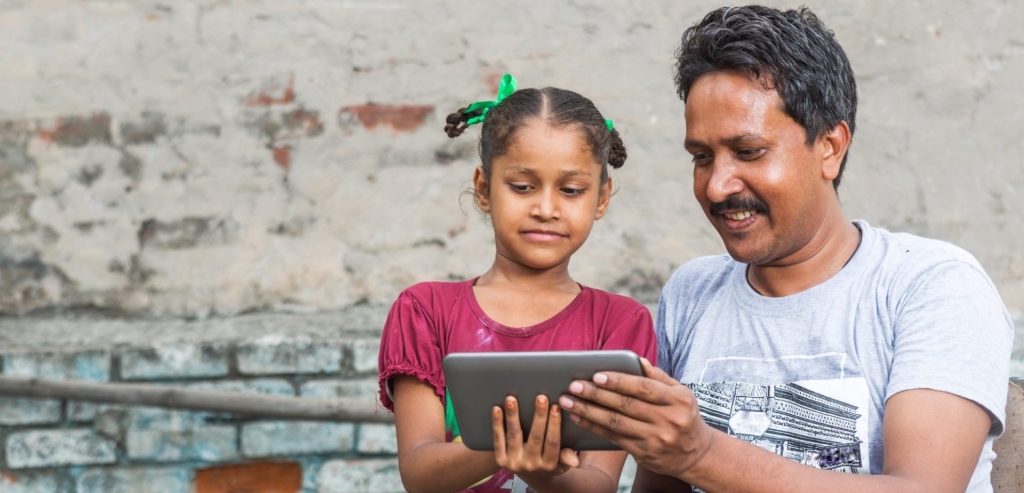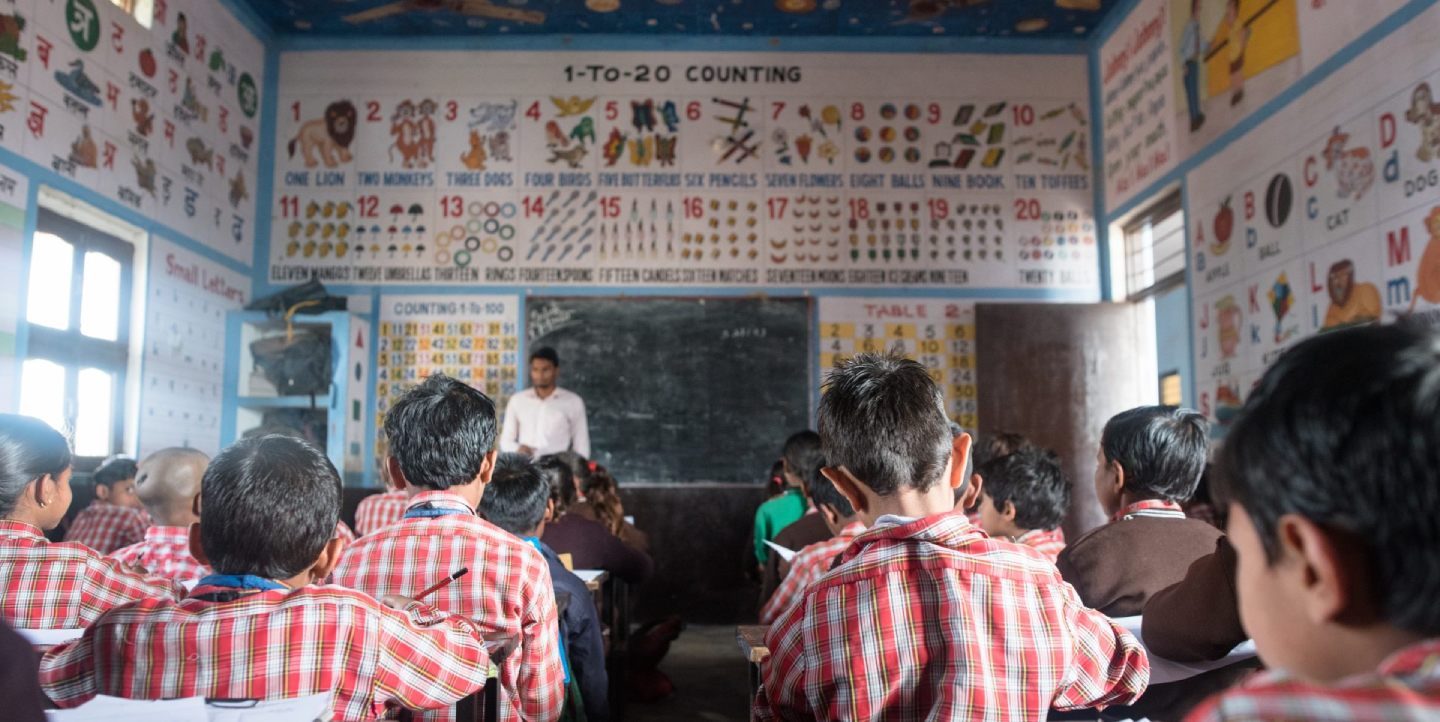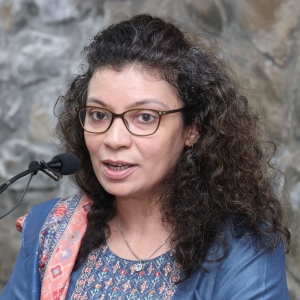The Union Budget 2022-23 is a significant one for the education sector; it is the first budget to be announced after the launch of the National Initiative for Proficiency in reading with Understanding and Numeracy (NIPUN) Bharat — a nation-wide mission that aims to ensure that every child possesses basic literacy and numeracy skills by the end of grade 3. NIPUN Bharat aims to achieve this goal by 2026-27.
The budget also comes at a time when schools are gradually reopening after sporadic closures for two academic years which has led to unprecedented learning loss in children. A study by Azim Premji University (APU) found that 92% of children on average lost at least one specific language ability from the previous year across grades 2-6, while 82% have lost at least one specific mathematical ability during the pandemic. The Finance Minister too acknowledged the learning loss faced by children in her budget speech. This recognition is a crucial first step to addressing the challenges in bridging the learning gap.
Highlights from the budget:
As schools reopen, albeit rotationally and not at full strength, leading voices in education have requested to keep aside grade-level curriculum and prioritize Foundational Literacy and Numeracy (FLN). EdTech too, will be critical to bridge the learning gap by enabling children to practice at home what is taught in schools. Strengthening EdTech access and delivery will also ensure uninterrupted learning going forward. Here are a few highlights from the budget 2022-23 on FLN and EdTech:
- Allocation for education witnessed an 11.8% increase from last year, but is still short of the 6% of GDP that the National Education Policy (NEP) 2020 recommends.
- Samagra Shiksha Abhiyan (SSA), MoE’s overarching program for school education, saw a 20% increase from 2021-22. It remains 64.5% lower than what MoE asked for (Rs. 103,673.66 Crore) in 2021-22. Funds for the implementation of the NIPUN Bharat mission will be carved out of those allocated for SSA.
- The budget recognises the role of EdTech in supplementing traditional methods of learning going forward, with several announcements to facilitate smoother integration of technology in education.
Foundational Literacy and Numeracy (FLN)
Even before the pandemic, FLN levels among children were poor. More than 70% of children in class 3 in rural India couldn’t read with meaning or solve basic math (ASER 2018). And the learning loss due to the pandemic-induced school closures highlighted by the APU study mentioned above is worrying. Add to this the fact that until recently, most children in grade 3 never set foot inside a school. Effective utilization of the budget for NIPUN Bharat would be crucial to ensure we help children ‘catch-up’ with lost learning and improve further.
Rukmini Banerji, Chief Executive Officer of Pratham Education Foundation recently told us for The EDge that we should put aside the usual textbooks and curriculum for grades 1 and 2, and meet children at their level as they enter school. She also mentioned that 2022 could be like a start-up year for NIPUN Bharat, and subsequently, require significant funding and focus to ensure the vision of the mission is achieved by 2026-27. It also remains to be seen how states utilize the allocated funds for FLN delivery and contribute to it from their own budgets. Adopting structured pedagogy approach with a suite of teaching-learning materials (TLMs) that empowers teachers to teach more effectively (like worksheets, lesson plans, etc.); training teachers to equip them with the know-how to leverage TLMs; and putting in place State and/or District Project Management Units (PMUs) are among the top key things which might require significant investment. (Read more about how States can benefit from implementing these as part of their FLN programs here)
Even before the pandemic, FLN levels among children were poor. More than 70% of children in class 3 in rural India couldn’t read with meaning or solve basic math (ASER 2018). And the learning loss due to the pandemic-induced school closures highlighted by the APU study mentioned above is worrying. Effective utilization of the budget for NIPUN Bharat would be crucial to ensure we help children ‘catch-up’ with lost learning and improve further.
Here are a few examples of how states and partner organizations have prioritized FLN. Last year, when schools reopened in Uttar Pradesh after a year of closures, the State Government organized ‘Prerna Gyanotsav’, a 100-day campaign to mobilize all key stakeholders to focus on FLN. Currently, West Bengal is working on a FLN bridge program which is likely to be implemented from the upcoming academic year. Language and Learning Foundation, a non-governmental organization which works on supporting children to develop better literacy skills has devised a comprehensive 4-step bridge program for FLN based on the organization’s experiences of working in Uttar Pradesh, which can be further scaled.
Early Childhood Education (ECE)
Greater emphasis on ECE, which refers to pre-primary education before a child joins school to ensure they are equipped with pre-numeracy and pre-literacy skills, will also be crucial going forward. The budget recognises the need to strengthen pre-primary education to make children school-ready, and has marginally increased the allocation for the Saksham Anganwadis scheme.
The allocation could be key to building the capacity of anganwadi workers, who are primarily health workers, to ensure they can provide children with a holistic learning foundation. Equipping anganwadi workers further with the tools and resources to help children learn the basics could go a long way in helping children build a solid foundation for lifelong learning. An alternative way to ensure learning in anganwadis could be to systematically introduce another worker who specializes in teaching preschool children.
The allocation for the Saksham Anganwadis scheme could be key to building the capacity of anganwadi workers, who are primarily health workers, to ensure they can provide children with a holistic learning foundation. Equipping anganwadi workers further with the tools and resources to help children learn the basics could go a long way in helping children build a solid foundation for lifelong learning
Some states have taken a different approach towards delivering quality ECE. The Odisha government is already working on opening 5,000 playschools to strengthen students’ foundational skills to make them school-ready. Assam is running a pre-primary program called Zero Class (Ka-Shreni) in all primary schools of the state, as a part of which, 11 key resource persons (KRPs) and 99 resource persons have been trained to provide quality ECE training. These KRPs have been trained to map activities with learning outcomes prescribed in the state and national curricular guidelines for school-readiness.
EdTech
The Central Government has been explicit in its digital push across sectors, and the budget reflects that for the education sector as well. The majority of the budget announcements for education were EdTech-related. The budget called for making educational resources available in regional languages and improving accessibility to digital education through PM e-Vidya. It further announced the expansion of the ‘One Class One TV Channel’ programme of PM e-Vidya from 12 to 200 channels. Two key things come off this: accessibility and reach of educational content will increase with availability in regional languages, especially in grades 2 & 3; and TV will provide greater reach.
However, given TV’s one-way instruction method, states could look at developing their own EdTech solutions with high-quality contextual content in vernacular languages which are also affordable or free of cost. Such solutions will cater to a large number of students residing outside of metropolitan Indian cities and effectively bridge the digital divide that restricts access to learning content.
Punjab has already partnered with Khan Academy and SBI Foundation to make high-quality and accessible educational content in Punjabi. The partnership also involves training teachers to effectively use its learning content and provide personalized teaching in classrooms. There are several other open-source and free education content available like TicTacLearn, which has already been adopted by 10 states as part of their home-learning programs.
School closures saw teachers having to quickly adapt to a new method of teaching, without any scope for adequate training. The budget rightly highlights the need to support teachers better, and calls to empower and equip teachers with the tools to enable them to develop quality e-content. The Central Board of Secondary Education (CBSE) has already partnered with Microsoft Education and Tech Avant-Garde, Global Training Partner of Microsoft to train teachers in affiliated schools on how to effectively leverage a hybrid module of teaching.

The budgetary push for EdTech comes at the back of everyone from governments to parents switching to online learning to ensure continued learning. While issues of access to devices and internet connectivity remain to be addressed, it has been encouraging to note the rise in smartphone penetration over the last few years: rural India witnessed an increase from 36.5% in 2018 to 67.6% in 2021 with 28% having bought a new smartphone specifically for their child’s education since the lockdown began (ASER 2021). Hopefully, the digital field will hopefully become a level-playing field soon enough for everyone to access EdTech. As for internet connectivity, states like Kerala are working to bridge the digital divide by implementing FTTH (fibre-to-the-home)/broadband connections and also erect mobile towers to provide Wi-Fi connections.
Google’s Read Along, which is aimed at helping children read better, allows students to download apps and stories after which it can work without Wi-Fi or mobile data.
Cross Learning and Optimizing Resources Key Going Forward
Prime Minister Narendra Modi, at a webinar on education sector-related announcements made in the budget, said that this budget would play a key role in the implementation of NEP 2020. Since the approval of the policy in July 2020, much of the resources have been diverted to tackle the Covid-19 crisis. And since schools were shut for most parts of two subsequent pandemic-academic years, the initial momentum that the policy brought on was somewhat dented.
However, with the launch of NIPUN Bharat, gradual school reopening, a section of the school-going children getting vaccinated, and now the Prime Minister’s encouraging words, 2022 might see school education reforms pick up momentum again.
While the road ahead is likely to have several speed breakers, a concerted strategy around promoting cross learning among different stakeholders, identifying some of the best practices and implementing them to optimize the existing funds can allow us to navigate them. Successfully implementing these can help us build back our schools better, support children with uninterrupted learning and eventually, ensure every child acquires FLN.



